I've added level 61 to my Royal Envoy strategy guide!
It was a real challenge finding a solid, surefire method of achieving the gold seal on this one, but I finally came up with a solution for finishing the level with a bit of juice left in the timer. Enjoy!
Friday, December 31, 2010
Thursday, December 30, 2010
Update - Royal Envoy strategy guide - level 62!
Level 62 has been added to my Royal Envoy strategy guide!
Wednesday, December 29, 2010
Updated my Royal Envoy strategy guide!
My Royal Envoy strategy guide 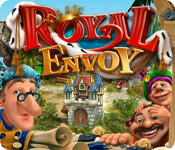 seems to be helping people, so I've decided to add more levels to it as I have the opportunity.
Today, I added level 63, the last level of the game. I'll probably continue working my way backward from there.
"What is this...Royal Envoy?" you may ask.
Read my review to find out!
seems to be helping people, so I've decided to add more levels to it as I have the opportunity.
Today, I added level 63, the last level of the game. I'll probably continue working my way backward from there.
"What is this...Royal Envoy?" you may ask.
Read my review to find out!
 seems to be helping people, so I've decided to add more levels to it as I have the opportunity.
Today, I added level 63, the last level of the game. I'll probably continue working my way backward from there.
"What is this...Royal Envoy?" you may ask.
Read my review to find out!
seems to be helping people, so I've decided to add more levels to it as I have the opportunity.
Today, I added level 63, the last level of the game. I'll probably continue working my way backward from there.
"What is this...Royal Envoy?" you may ask.
Read my review to find out!
Saturday, December 11, 2010
How minor flaws can ruin a casual game.
I have tested scads of casual games. New games are released every single day, and yet I buy very few of them.
I have identified a category of game that I call "Great game, if it didn't have this minor flaw." Many are the times when I was close to purchasing a game, but decided against it on account of a minor flaw.
Minor flaws have amazing power. They can make or break the purchase, and can often be the difference between satisfaction and agony.
What do I mean when I say, "minor flaw"? I mean, some feature that is small in scope or principle. This is contrasted with big flaws, such as "way too short" or "terrible artwork."
Let me give you some examples that I thought of this morning. I'll begin with the king of all tragic minor flaws.
 mechanics and nice graphics, with some strategy and time management. But it wasn't long before I cringed at the realization that you can't chain your actions. Many time management games build in a chaining feature, so that you can plan ahead while your character is carrying out her actions. But this game, which so obviously needs chaining, lacks this feature. A few levels without this feature had me bailing and uninstalling what was otherwise a pretty cool game.
mechanics and nice graphics, with some strategy and time management. But it wasn't long before I cringed at the realization that you can't chain your actions. Many time management games build in a chaining feature, so that you can plan ahead while your character is carrying out her actions. But this game, which so obviously needs chaining, lacks this feature. A few levels without this feature had me bailing and uninstalling what was otherwise a pretty cool game.
 Then, they released a sequel. "Maybe they heard the complaints from the community and allowed chained actions this time!" we all thought. But it was not to be. Again, they denied us the sweet freedom of chained actions. How could they make this blunder twice in a row? Was the feature that hard to build in? For this reason, I bailed on both games.
Then, they released a sequel. "Maybe they heard the complaints from the community and allowed chained actions this time!" we all thought. But it was not to be. Again, they denied us the sweet freedom of chained actions. How could they make this blunder twice in a row? Was the feature that hard to build in? For this reason, I bailed on both games.
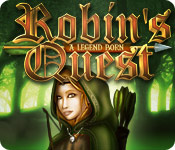 There are many games that fall into this category, but Robin's Quest is the first game that came to mind.
The flaw: The game is too easy.
The game was beautiful, with nice music, a clean interface, and a variety of tasks to accomplish. But there was very little challenge. If I'm going to spend money on a game such as this, I want it to make my mind work. Breezing through a game doesn't offer the kind of mental challenge that I'm looking for. The puzzles should have been more plentiful and more difficult. With a bit more difficulty, this game could have been really cool.
There are many games that fall into this category, but Robin's Quest is the first game that came to mind.
The flaw: The game is too easy.
The game was beautiful, with nice music, a clean interface, and a variety of tasks to accomplish. But there was very little challenge. If I'm going to spend money on a game such as this, I want it to make my mind work. Breezing through a game doesn't offer the kind of mental challenge that I'm looking for. The puzzles should have been more plentiful and more difficult. With a bit more difficulty, this game could have been really cool.
My Kingdom for the Princess 1 and 2
Here was a game with interesting mechanics and nice graphics, with some strategy and time management. But it wasn't long before I cringed at the realization that you can't chain your actions. Many time management games build in a chaining feature, so that you can plan ahead while your character is carrying out her actions. But this game, which so obviously needs chaining, lacks this feature. A few levels without this feature had me bailing and uninstalling what was otherwise a pretty cool game.
mechanics and nice graphics, with some strategy and time management. But it wasn't long before I cringed at the realization that you can't chain your actions. Many time management games build in a chaining feature, so that you can plan ahead while your character is carrying out her actions. But this game, which so obviously needs chaining, lacks this feature. A few levels without this feature had me bailing and uninstalling what was otherwise a pretty cool game.
 Then, they released a sequel. "Maybe they heard the complaints from the community and allowed chained actions this time!" we all thought. But it was not to be. Again, they denied us the sweet freedom of chained actions. How could they make this blunder twice in a row? Was the feature that hard to build in? For this reason, I bailed on both games.
Then, they released a sequel. "Maybe they heard the complaints from the community and allowed chained actions this time!" we all thought. But it was not to be. Again, they denied us the sweet freedom of chained actions. How could they make this blunder twice in a row? Was the feature that hard to build in? For this reason, I bailed on both games.
Robin's Quest: A Legend Born
 There are many games that fall into this category, but Robin's Quest is the first game that came to mind.
The flaw: The game is too easy.
The game was beautiful, with nice music, a clean interface, and a variety of tasks to accomplish. But there was very little challenge. If I'm going to spend money on a game such as this, I want it to make my mind work. Breezing through a game doesn't offer the kind of mental challenge that I'm looking for. The puzzles should have been more plentiful and more difficult. With a bit more difficulty, this game could have been really cool.
There are many games that fall into this category, but Robin's Quest is the first game that came to mind.
The flaw: The game is too easy.
The game was beautiful, with nice music, a clean interface, and a variety of tasks to accomplish. But there was very little challenge. If I'm going to spend money on a game such as this, I want it to make my mind work. Breezing through a game doesn't offer the kind of mental challenge that I'm looking for. The puzzles should have been more plentiful and more difficult. With a bit more difficulty, this game could have been really cool.
A second little quibble: It certainly didn't help that Robin was a woman either. I'm not against female characters - I've played dozens of games in the female protagonist role, which is fine with me. But this is a Robin Hood story, so it should be about a man. But this developer wanted to conform to the feminist culture in which we live, casting Robin's husband as a helpless whelp trapped in prison, while his heroic wife escapes from prison and works to save him. In a culture that feminizes and degrades men enough as it is, this game certainly doesn't help matters.
 I liked the first Enlightenus game (read my review), but was disappointed when I played the sequel.
The flaw: The game was too much like the first game.
I was hoping for some changes and twists to make the sequel fresh. But the developer didn't deliver. Sure, there were some tiny differences, but the game was mostly just an extension to the first game. The mechanics felt just the same, and even the music was recycled. I didn't feel like continuing with more of the same old stuff, so I abandoned this game.
I liked the first Enlightenus game (read my review), but was disappointed when I played the sequel.
The flaw: The game was too much like the first game.
I was hoping for some changes and twists to make the sequel fresh. But the developer didn't deliver. Sure, there were some tiny differences, but the game was mostly just an extension to the first game. The mechanics felt just the same, and even the music was recycled. I didn't feel like continuing with more of the same old stuff, so I abandoned this game.
Enlightenus II: The Timeless Tower
 I liked the first Enlightenus game (read my review), but was disappointed when I played the sequel.
The flaw: The game was too much like the first game.
I was hoping for some changes and twists to make the sequel fresh. But the developer didn't deliver. Sure, there were some tiny differences, but the game was mostly just an extension to the first game. The mechanics felt just the same, and even the music was recycled. I didn't feel like continuing with more of the same old stuff, so I abandoned this game.
I liked the first Enlightenus game (read my review), but was disappointed when I played the sequel.
The flaw: The game was too much like the first game.
I was hoping for some changes and twists to make the sequel fresh. But the developer didn't deliver. Sure, there were some tiny differences, but the game was mostly just an extension to the first game. The mechanics felt just the same, and even the music was recycled. I didn't feel like continuing with more of the same old stuff, so I abandoned this game.
There are cases where doing the same thing over again works out wonderfully, as long as appropriate changes are made. For example, Luxor 3 was an awesome marble popper. Luxor: Quest for the Afterlife was mechanically very similar, keeping every good element from Luxor 3. But they changed things like story, how the marketplace looked, and how you traveled around the map. They even added a battle mode. This is how sequels should work. The Drawn series also did this very well. I loved Farm Frenzy and Farm Frenzy 2. Those games did everything right. Even Farm Frenzy Pizza Party was fun, if you didn't mind a rehash of FF2.
Then, Farm Frenzy 3 was released. They had updated the graphics and interface with some new polish, and would eventually start moving into more unique and varied settings. The game also introduced a new female protagonist who would remain the focus of a storyline, which had never been a part of previous FF games. (Need I explain why the developer would introduce this new character? Or why the character was young, blonde, and female? Sex sells, folks. Even on the farm, apparently. *sigh*)
This new Farm Frenzy game engine spawned numerous FF3-based sequels, including:
I loved Farm Frenzy and Farm Frenzy 2. Those games did everything right. Even Farm Frenzy Pizza Party was fun, if you didn't mind a rehash of FF2.
Then, Farm Frenzy 3 was released. They had updated the graphics and interface with some new polish, and would eventually start moving into more unique and varied settings. The game also introduced a new female protagonist who would remain the focus of a storyline, which had never been a part of previous FF games. (Need I explain why the developer would introduce this new character? Or why the character was young, blonde, and female? Sex sells, folks. Even on the farm, apparently. *sigh*)
This new Farm Frenzy game engine spawned numerous FF3-based sequels, including:
Farm Frenzy 3 Series
 I loved Farm Frenzy and Farm Frenzy 2. Those games did everything right. Even Farm Frenzy Pizza Party was fun, if you didn't mind a rehash of FF2.
Then, Farm Frenzy 3 was released. They had updated the graphics and interface with some new polish, and would eventually start moving into more unique and varied settings. The game also introduced a new female protagonist who would remain the focus of a storyline, which had never been a part of previous FF games. (Need I explain why the developer would introduce this new character? Or why the character was young, blonde, and female? Sex sells, folks. Even on the farm, apparently. *sigh*)
This new Farm Frenzy game engine spawned numerous FF3-based sequels, including:
I loved Farm Frenzy and Farm Frenzy 2. Those games did everything right. Even Farm Frenzy Pizza Party was fun, if you didn't mind a rehash of FF2.
Then, Farm Frenzy 3 was released. They had updated the graphics and interface with some new polish, and would eventually start moving into more unique and varied settings. The game also introduced a new female protagonist who would remain the focus of a storyline, which had never been a part of previous FF games. (Need I explain why the developer would introduce this new character? Or why the character was young, blonde, and female? Sex sells, folks. Even on the farm, apparently. *sigh*)
This new Farm Frenzy game engine spawned numerous FF3-based sequels, including:
- Farm Frenzy 3: American Pie
- Farm Frenzy 3: Ice Age
- Farm Frenzy 3: Madagascar
- Farm Frenzy 3: Russian Roulette, and
- Farm Frenzy: Gone Fishing.
Friday, November 19, 2010
Luxor: 5th Passage - tragic disappointment!

- the marbles
- the interface
- the scarabs that push the marble chains, and
- the look of the levels.
- I have a detailed and picky eye for quality, and this game lacks it.
- I had come to trust MumboJumbo, and they didn't deliver. I imagine that with the current economic struggles, they wanted to cut costs, and so reverted to the old, unpolished style, hoping fans wouldn't notice.
- The graphics look grainy, and you can't adjust the resolution.
- The controls feel jerky and hesitant.
- When marble chains are approaching the exit, the marbles don't load into the shooter in as nice of a pattern as before.
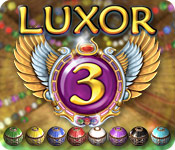 |  |
Wednesday, October 27, 2010
Review - The Fifth Gate!
I like when a game has a really unique set of mechanics, which is why I bought and played The Fifth Gate. Although, I have to admit, as unique as these mechanics are, this wasn't the first game to employ them. In fact, this game ripped off an older game: Magic Farm, which I reviewed a while ago.
Because of the similarities between the two games, I think this review will be more of a comparison than a standard review. I'll attempt to identify the positives and negatives of The Fifth Gate's approach to this style of flower husbandry.
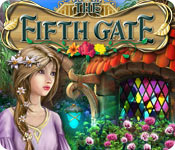




 My wife liked the game until it glitched.
The children gladly stood by, calling out when I needed to attack a particular pest. They like anything with little creatures, and this game is no exception.
There's a witch in the game, but she is supposed to look deceptively attractive, I think. So there's nothing scary in the game. There are no voice-overs or scary sounds either.
My wife liked the game until it glitched.
The children gladly stood by, calling out when I needed to attack a particular pest. They like anything with little creatures, and this game is no exception.
There's a witch in the game, but she is supposed to look deceptively attractive, I think. So there's nothing scary in the game. There are no voice-overs or scary sounds either.

What I liked
What I didn't like
|

Quick Plot
Plant and harvest flowers to create potions to give to a witch lady who is forcing you to work for her. Oh, and you play young Jane Seymour (not really, but doesn't that girl look like her?).Mechanics
Time Management: This game is a fast-clicking time crunch. I'll summarize it like this:- Start the day.
- Harvest flowers as they bloom.
- Water the plants as they become thirsty.
- Attack pests as they come to eat your plants.
- Do all of this as quickly and completely as you can before the day ends.
- Take on new quests from the witch lady.
- Use your harvested flowers to make potions.
- Sell potions for gold.
- Use gold to buy
- upgrades for your fountain, watering can, flower basket
- new plants, or
- magic potions (power items that give you a boost when the pressure is on).

A standard level. Water and gold in the lower right.
Timer and flower basket in the upper left. Fountain in the lower left.
Of course, as the game progresses through the 5 gardens, the difficulty will increase. More numerous and difficult pests will arrive, and you'll find yourself planting, harvesting, and watering more plants at a more rapid-fire pace. The game will certainly keep you on your toes. Well, maybe not your toes, but it will make you sit up in your chair. Okay, maybe not, but it will at least make your shoulders tense up.
Comparisons to Magic Farm
| In Magic Farm... | In The Fifth Gate... |
|---|---|
| You have a pet who helps you. | You don't have a helper. |
| You gain experience points to improve. | There is no experience system. |
| You receive quests from various characters. | You only receive quests from the witch lady. |
| You can complete quests on your own schedule. | You have to complete quests according to the witch lady's schedule. |
| There is no "expert" goal for quests. | You can complete each quest quickly to achieve an "expert" goal for that quest. |
| The mood and music are chipper and bright. | The mood and music are more somber and new-agey. |
| The English is very awkward and poorly written. | The English is fine. |
| You almost never get to keep your earnings from one garden to the next. | You never get to keep your earnings from one garden to the next. |
| Late in the game, you can no longer return to some of the earlier gardens. | You can always go back and repeat any quest for any garden. |
| The story is fleshed out, with ups and downs. | The story is relatively vapid and minimalistic. |
| You use your flowers to make bouquets. | You use your flowers to make potions. |
| You are limited to choosing from 4 available bouquets at a time. | You are limited to choosing from 10 available potions at a time. |
| You get good graphics. | You get better, shinier graphics. |
| You earn trophies by accomplishing various feats. | You earn trophies by accomplishing various feats. |

The level map.
The mirrors at the bottom represent the levels for the garden you're on.
Highlights
Addictive: This game is hard to stop playing. It'll be late at night and you'll be saying, "Just one more level." even though you've already said that 13 times. I wonder if the addiction factor is related to the short levels? Or the reasonable goals you are always working for? Just a couple more of a certain flower and you'll be able to finish that sweet potion you've been working on. Just two more levels and you'll move onto the next garden. A little more gold and you'll be able to upgrade your flower basket. And on it goes.Potion making: I don't know why this is so fun, but it is. You decide which flowers go into which potion. But even if you don't have every flower you need, that's okay. You can use up as many as you have, and the potion will fill up part way. This means you don't have to keep lots of flowers in your basket, taking up valuable space. In between levels, you can use up most of your flowers on partial potions. Once you finish a potion, it'll go on your sale shelf and you can earn gold for it. The potions look cool, and have weird or silly magical names like "Sneezing Potion."


The potion-making room.
Plant types: There was some cool plants in this game. You could buy a watering plant that gives you extra water every time it blooms. One great plant was this crystal that, when you click it, all of the pests are immediately drawn in and frozen in ice, so they're easy to destroy all at once. There's a butterfly plant that allows you to increase the maturity level of one of your plants (although, you still can't use this unless the next level for that plant has been unlocked....).
There are also some great magic potions you can buy to help you work. One of these is a destroy-all-pests potion. One is a water-all-plants potion. The other is a harvest-all-plants potion. All of these are extremely helpful. You can only have 2 at a time. They each have something like 6 uses. And you have to pay for the slots to store them in your garden. But they're worth it, once you can afford them. And they are essential late in the game.

The trophy room.
Issues
Big bug: My wife ran into a technical bug on her game. During the last garden in the game, the game started taking all of her gold away, making it impossible to water her flowers or do anything else. Big Fish had no fix for the issue. Other people have reported the same issue. If this happens to you, contact Big Fish support to see if they have a fix yet. If not, they might compensate you in some other way. Story: The story in this game is nearly absent. And even what little story exists is boring and silly. Forced progress: In Magic Farm, you could take your time and pursue various quests at your own pace. If you wanted to build up your farm for a while, you could. And you could receive quests from multiple people at a time. In this game, you receive quests from one lady, and you are really forced to keep moving. It's just not as fulfilling. No experience system: In Magic Farm, you earned experience for everything you did on the farm, and you could advance both your skills, and the skills of your dragon familiar. This growth factor was good incentive to play well. It offered improvement. In this game, there is no experience system. They simplified the mechanics of Magic Farm without offering many beneficial additions (except maybe graphics).
Suitable for the family?
 My wife liked the game until it glitched.
The children gladly stood by, calling out when I needed to attack a particular pest. They like anything with little creatures, and this game is no exception.
There's a witch in the game, but she is supposed to look deceptively attractive, I think. So there's nothing scary in the game. There are no voice-overs or scary sounds either.
My wife liked the game until it glitched.
The children gladly stood by, calling out when I needed to attack a particular pest. They like anything with little creatures, and this game is no exception.
There's a witch in the game, but she is supposed to look deceptively attractive, I think. So there's nothing scary in the game. There are no voice-overs or scary sounds either.
The family man's final ruling
I have a hard time settling on a rating for this game, honestly. I found plenty of nitpicks, but the game really was engaging and kept me busy for a long time. The same mechanics that were fun in Magic Farm are fun in this game. And I did like the graphical presentation even more in this game. I also liked the way potion-making worked more than I liked how bouquets worked in Magic Farm. So while part of me wants to give the game 3 stars because it isn't quite as good as Magic Farm, I also want to give it 4 stars because it was a fun game. But it didn't have all of the qualities of a 4-star game, so I think I have to go with 3 stars. This means the game is average in terms of fun. There are great things about it, but also flaws. I recommend the game, but I recommend many other games more.
You'll like the game if...
You won't like the game if...
|
| My rating: | 
|
Friday, September 24, 2010
Review - Enlightenus!
I can imagine the game designer sitting down with his developer buddies one afternoon:

 These item placement scenes make up the bulk of the game. You find them by walking around the environment, as you would in any other first-person adventure game. When you see a sparkling piece of paper attached to something, you click on it to play the item placement scene. Each scene is named after one of the author guy's stories.
You will visit each "story" a few times, with a different set of items each time (as in many HOGs).
The game is easy enough that you'll rarely need to use hints. But if you want them, you can find two in each scene. They show up as hidden cards with an "E" on them. Each one of these cards counts as one hint in your reserve, and they don't ever expire or refresh; you get to keep them until you use them.
Puzzles: You will have to solve a number of simple, but amusing, puzzles. I always enjoyed when one of these showed up. Many of them involve some form of connection-making, such as memory matching or deciding which items go with which season.
Inventory: You'll have an inventory containing items that you pick up in one location and use in another location. This is a standard adventure game feature.
These item placement scenes make up the bulk of the game. You find them by walking around the environment, as you would in any other first-person adventure game. When you see a sparkling piece of paper attached to something, you click on it to play the item placement scene. Each scene is named after one of the author guy's stories.
You will visit each "story" a few times, with a different set of items each time (as in many HOGs).
The game is easy enough that you'll rarely need to use hints. But if you want them, you can find two in each scene. They show up as hidden cards with an "E" on them. Each one of these cards counts as one hint in your reserve, and they don't ever expire or refresh; you get to keep them until you use them.
Puzzles: You will have to solve a number of simple, but amusing, puzzles. I always enjoyed when one of these showed up. Many of them involve some form of connection-making, such as memory matching or deciding which items go with which season.
Inventory: You'll have an inventory containing items that you pick up in one location and use in another location. This is a standard adventure game feature.



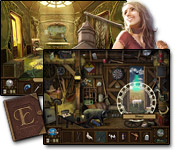 Sure. My kids stood by watching, and enjoyed some parts of the game. There's nothing scary, shocking, or offensive. I can imagine your whole family appreciating this one. It'll appeal more to older kids, I think. There aren't many bright colors or cute things to watch, so little kids might lose interest more quickly. But that's good, right? Shouldn't they be out playing anyway?
Sure. My kids stood by watching, and enjoyed some parts of the game. There's nothing scary, shocking, or offensive. I can imagine your whole family appreciating this one. It'll appeal more to older kids, I think. There aren't many bright colors or cute things to watch, so little kids might lose interest more quickly. But that's good, right? Shouldn't they be out playing anyway?

Designer: "Hey guys, I have a sweet idea for a new game. It'll blow your minds."
Developer buddies: "Oh yeah? Enlighten us."
Designer: "Wait a minute....Enlighten us. Enlightenus. Finally, a title for my game! w00t!"
If you're bored with the endless supply of half-baked HOGs, this game should offer you the change you've been looking for. So read on, and see what Enlightenus has to offer!
What I liked
What I didn't like
|

Quick Plot
Travel to somewhat magical places, collecting scattered fragments of some dude's books.Mechanics
Object placement: This is the first game on the market to reverse the functionality of a cluttered scene. In your standard hidden object game, you're given a list of items to seek out with your eyeballs. In this game, you are instead given the objects, and your job is to place them correctly into the scene. You are given a row of items at the bottom of the screen. When you mouse over an item, it displays the item's name. Clicking on an item will pick it up. Then, when you hover the mouse over various areas and objects in the scene, names for those areas are displayed. In this way, you are assisted in finding matches. For instance, maybe I pick up the item called "steak" and then move the mouse around the screen. I see that the wolf in the scene is called "hungry wolf", so I click the steak on the wolf and *POOF* - they combine. Once you do this sort of matching for every item in your inventory, the scene is completed, and you earn an emblem token that will be used on a puzzle somewhere nearby.

Highlights
Graphics: This game scratches my adventure game itch in its overall presentation. The graphics are much like those of the old first-person adventure games of the 90s. You walk around in ambiently lit locations, where fascinating visuals greet you at each new turn. The environments were obviously designed with care and skill. Also, there are a number of paintings in the game. I thought the artwork on these was excellent. There were clearly some pro artists on this game.Music: Is the music great? No. Does it work well for the game? Yes. The music has a synth orchestra vibe to it, but unlike many casual games, it sounds like the composer was someone who knows what he's doing. The tranquil underscore, I think, complements the gameplay in a satisfying way.

Issues
Repeated scenes: I can't dock the developer too many points for this one, because most HOGs do this same thing: take you back to the same scenes you've already scrutinized. They think that changing the list of items will make it more bearable. After all, they spent all that time designing the scenery, so it only makes sense to get a little mileage out of it, right? Personally, I get tired of repeated scenes in this sort of game. Let me soften this gripe by saying that I didn't mind it in this game quite as much because of the item placement mechanic. In this game, it can actually be fun to place items into those spots that you didn't get to interact with the first time through a scene. But still, 3 or 4 times through the same scene is just too many for my taste. Story: "The heck?" This is my response to the story in many games, including this one. I admire the writer for trying to come up with something somewhat fantastical and literature-themed, but the execution left me bored. I think I kind of understand what happened. Or maybe not. You see? I don't like that kind of story. I want to have a clear understanding of exactly what happened, how it worked out, and why my part in it was significant. I am admittedly slow in the mental department sometimes, but I'm pretty sure this story wasn't tied together very well. You may disagree. I hope you get more out of it than I did.
Suitable for the family?
 Sure. My kids stood by watching, and enjoyed some parts of the game. There's nothing scary, shocking, or offensive. I can imagine your whole family appreciating this one. It'll appeal more to older kids, I think. There aren't many bright colors or cute things to watch, so little kids might lose interest more quickly. But that's good, right? Shouldn't they be out playing anyway?
Sure. My kids stood by watching, and enjoyed some parts of the game. There's nothing scary, shocking, or offensive. I can imagine your whole family appreciating this one. It'll appeal more to older kids, I think. There aren't many bright colors or cute things to watch, so little kids might lose interest more quickly. But that's good, right? Shouldn't they be out playing anyway?
The family man's final ruling
This game was a welcome change for me. HOGs these days are so yawn-inducing that the item placement mechanic of Enlightenus was very welcome. I think if there was more diversity in the item placement scenes, and in the music, then this game would have been even better. Then, hire a professional writer to make the story compelling, and you could have a really great game. I recommend this above most HOGs, even the newer, shinier ones. So, while it loses points for lack of variety, the game was still beautiful, innovative, and kept me playing through to the end. And, if you end up really liking this one, there is a sequel! It plays exactly like the first game in terms of mechanics and music, but with a new story and new scenery.
You'll get to solve many of these disc placement puzzles.
You'll like the game if...
You won't like the game if...
|
| My rating: | 
|
Thursday, August 26, 2010
Sequel to Drawn: The Painted Tower, and other thoughts!
Drawn Sequel
If any of you liked Drawn: The Painted Tower as much as I did, you might be interested to know that the sequel is coming. That's right. Go here to watch the trailer for Drawn: Dark Flight! w00t!Recent Games
I've been trying a bunch of new games, to see if they're worth buying and reviewing. But I find myself unable to make up my mind about most of them. Perhaps you'll be willing to post a comment and add your own 2 or 10 cents? Echoes of the Past: The Castle of Shadows: I can't even get this game to work. It just black-screens. The same thing happened with Vacation Mogul, and I never got to try it. It would sure be nice if developers would iron these things out before the release date. Robin's Quest: A Legend Born: This game has sweet production values! It's lovely to look at and plays smoothly. But I have two gripes that are keeping me on the fence.- In a culture where we have already feminized men beyond recognition, do we really need a game that casts Robin Hood as a woman, and gives her the brains and brawn to break out of jail and save her helpless husband from the same jail?
- There's not much challenge in the game. And I've heard others say that the game is a bit short. These are two heavy strikes against a purchase for me.
Wednesday, August 11, 2010
Strategy Guide - Royal Envoy!
Introduction
Royal Envoy is one of the most enjoyable strategic building games I've played (Read my review!). The goal of each level (besides completing your assigned tasks) is to earn the gold seal. This is accomplished by finishing all of your tasks before the timer runs out. On some levels this is easy to do. On other levels, it's somewhat challenging. But on some levels, it can be a real struggle, taking 3 to 5 attempts to figure out an effective path to success. The purpose of this strategy guide is to give you a step-by-step walkthrough for the levels that I found to be most challenging.You might find some of these levels to be easy. Still, others of you might play levels that you think should be included here.
If you can't seem to find the path to the gold seal on a level that I haven't included, please post a comment on this article, and tell me which level you'd like a walkthrough for. I'll add a walkthrough for any requested levels.
Strategy Guide
Note about taxes: In all of the following walkthroughs, it is assumed that you will be collecting taxes from houses whenever you can, unless specifically instructed to do otherwise. The same goes for Banks.Level 18
Note: Don't pay the pirate in this level.- Build 2 three-star Cottages (upgrade siding first) in the center row, with a Lantern in between. It is important to keep working on these until they are complete. Don't collect any taxes from them until they're done. You want to keep your workers from going back to the Castle.
- Build 3 Cabins on the top row with siding and gardens (no other upgrades).
- Build a Lantern between 2 Cabins and a Flowerbed between 2 Cabins. At this point you'll be a little over half of the allotted time.
- Pay the balloon guy in the following order:
- 2000 (2 times)
- 500 (2 times)
- 100 (repeat until the scale is balanced)
Level 23
- Build a Sawmill next to the Castle.
- Process wood (800 at a time) at the Sawmill until you have 4800 materials.
- Process 200 wood at the Sawmill. You will now how 5000.
- Start construction on the bottom bridge.
- Buy 2 Tax Collectors and 1 Worker.
- Dig up 2 holes as soon as the bridge is complete.
- Start getting good deals at the Market (you're trying to collect 35,000 money). 50 for 3000 or 100 for 4000 are the best deals. Keep doing this as you proceed with the following steps.
- Once you have 35,000 money, pay the pirate.
- Dig up the hole.
- Trade with the merchants until you have 10,000 money. In the meantime, build the upper bridge and make sure you have 4500 wood in stock. You don't need to trade in the Markets anymore at this point.
- Pay the 2nd pirate.
- When the smoke clears, build a Statue between the Cabins.
Level 26
- Build 2 Chalets with siding. I put them on the right and left sides of the Castle.
- Build Cottages with siding in all other slots.
- Begin paying the pirates whenever you have 3000 money.
- Add a garden to each building.
- Use your remaining wood to upgrade any houses you can. I focused on the Chalets.
- Once you have 7000 money, pay the last pirate.
Level 32
- Start producing in the Workshop.
- Clear all brambles.
- Build a second Workshop right next to the other Workshop. Keep them constantly producing.
- Build a Villa under the Circus.
- Upgrade the Villa all the way, with siding, but no garden.
- Complete the bridge.
- Build Cabins with siding in every remaining slot.
- Restore the Circus and start running festivals. Keep running them as you proceed. Eventually you will finish the level.
- Buy Tax Collectors until you have 7.
- Keep collecting taxes and producing materials in your Workshops.
Level 35
- Build a Sawmill in the middle row, middle slot.
- Add siding to all Villas as soon as you've collected taxes once.
- Process 800 wood at the Sawmill once you have enough money.
- Process 400 wood at the Sawmill once you have enough money.
- Build a Workshop in the middle row, next to the Castle. Keep the Workshop constantly producing.
- Keep constantly processing 400 or 800 wood in the Sawmill.
- Buy 3 Workers as you go (for a total of 6).
- Build Chalets (with siding) in the empty slots in the top and bottom rows.
- Demolish the Villa in the middle row.
- Build a Bank in the middle.
- Demolish Villas on the top and bottom rows.
- Build Chalets with siding on the top and bottom rows.
- Demolish the Sawmill and build a Market in its slot. You can use the market to help you get the 10,000 money needed to pay the pirate.
- Pay the smoking pirate.
- Build a fountain.
Level 37
- Build a Workshop in the middle row.
- Clear all brambles.
- Demolish the Fountains and Flowers.
- Produce in the Workshop constantly.
- Build 2 Villas in the empty slots.
- Add siding to both Villas, and upgrade them to 3 stars.
- Collect taxes until you have 15,000 money.
- Pay the pirate.
- Add siding to the Villas on the bottom row.
- Pay the other pirate.
- Demolish both middle Villas.
- Add siding to the Villas on the top row.
- Build 2 Banks in the middle.
- Build a Flowerbed between 2 Villas, and Flowers between 2 Villas.
- Upgrade 2-star Villas to 3 stars.
- Buy extra tax collectors (for a total of 6).
- Keep emptying the Banks.
Level 38
- Clear out the right side first.
- Restore 2 Markets, and build a Sawmill at the bottom as quickly as possible.
- Spend the rest of the time clearing brambles, digging up holes, restoring Markets, building Markets doing trades, and buying 800 wood at the Sawmill.
- Note: Only do Market trades of 3000 for 50, or 4000 for 100.
- Once all Markets are restored, build the three flowers. Each flower costs 450 wood. Once you're down to the last flower, use the Sawmill to process whatever amount you need, even if it's just 200. You should finish just before the timer runs out.
Level 56
- Send out all Workers to clear the brambles. Start with the buildings on the sides of the Castle. Then, focus on the bottom. You want to quickly clear paths to the Bank, and to the empty lots in the middle. Then, get to the middle lots in the top row. Then, clear out the rest. You'll still be clearing brambles while you carry out the steps below.
- Build a Sawmill one one side of the Castle. As soon as it's built, buy 1600 wood.
- While you're waiting for the Sawmill, buy Workers. You'll want 9 total.
- Build a Workshop on the other side of the Castle as soon as your Sawmill worker delivers the wood to the Castle.
- As soon as your Workshop is built, demolish both Dragon Statues.
- Keep your Workshop constantly running.
- Start building Mansions with siding in every slot. Start with the slots closest to the Castle, and build out from there.
- Whenever you have enough money, buy 1600 wood from the Sawmill. Keep checking periodically.
- Whenever the Bank has 4000 gold available, send a Tax Collector to pick it up.
- Once all Mansions have been built, start adding Gardens to each one.
- Build 5 lanterns.
Level 57
There are a number of ways to finish this one with the gold seal, but only in the nick of time. I played it over and over, trying to find the quickest method. I finally found a way to get the gold seal while your timer is still above the little metal bar near the bottom of the time meter.- Demolish the Market. This gets you lots of materials.
- Start collecting rent right away.
- As soon as you have enough money, start buying Workers. Keep buying them as you play, until you have 10.
- As soon as your Workers bring back the materials from the demolished Market, start running your Workshop, and keep it constantly running.
- Put siding on your Mansion as soon as you can.
- Put siding on all of your other houses.
- Collect money from your Bank regularly.
- Start buying Tax Collectors, and keep buying them as you play, until you have 10.
- Buy 400 materials at the Sawmill.
- Once you have 2000 materials, build a Workshop next to the Bank. Keep it constantly running.
- Note: If you need to, you can occasionally buy 400 or 800 materials at the Sawmill to help you build all of the stuff in the following steps. You should count mostly on your Workshops though.
- Start upgrading your Mansion until it has 3 stars.
- Build a Mansion with siding in one of the bottom corners.
- Build a Bank in the other corner. Keep collecting from it regularly.
- Add Gardens to 5 houses. Only add a Garden to one of the Mansions.
Level 58
- Build 3 Villas with siding.
- Construct the bridge.
- Upgrade all Villas to 1 star.
- Collect money continuously from Villas and Banks.
- Pay the bandit once you have 30,000 money.
- Clear the brambles.
- Send Workers to dig up both holes at the top.
- Buy 5 Workers.
- Build a Workshop next to the Castle as soon as you have 2000 materials. Keep the workshop running.
- Buy 1,600 materials at the Sawmill whenever you have 16,000 money.
- Each time you have 1,200 materials, demolish a Bank and build a Mansion with siding.
- Once you have built 3 Mansions, add Gardens to all 6 houses.
Level 59
- Start building a Workshop in the empty space at the bottom. Once it's built, keep it running.
- Clear all 4 brambles.
- Dig up the hole at the top.
- Demolish all 4 Villas. You may want to collect money from them first, if it's available.
- Build 4 Chalets with siding.
- Buy 2 Workers.
- Upgrade all Chalets to 3 stars and gardens.
- Pay the pirate when you have 20,000 money.
- Build 4 Chalets with gardens in the spaces on the right side. Hopefully none of them will need repairs in the short time it will take to complete these. If they break, repair them.
Level 60
- Send all 5 Workers to the cave. Leave them there the rest of the time.
- Collect the money from all 3 Banks.
- Buy 1 Worker.
- Start constructing the bottom bridge as soon as you can.
- Clear the brambles when you're done.
- Buy 1 Worker.
- Start constructing the middle bridge.
- Clear the brambles when you're done.
- Buy 1 Worker.
- Start constructing the top bridge.
- Clear the brambles when you're done.
- Start buying Workers until you have 11.
- Send a Worker to dig up the hole next to the cave.
- Build a Mansion with siding in every empty slot.
- Keep upgrading the 3 Mansions until they all have 3 stars.
- NOTE: Remember to keep your Tax Collectors constantly collecting money from the Mansions and Banks.
- Start paying the pirates whenever you have 10,000 money.
- Clear the brambles each time you pay a pirate.
- Buy 1 Tax Collector (you'll have 4 total).
- Buy 1 Worker (you'll have 12 total).
- Once the brambles have all been cleared, build Mansions with siding in all 3 slots.
- Build Statues between all Mansions.
- Upgrade all Mansions to 3 stars. Eventually you'll reach 300,000 money and win with time left.
Level 61
- Demolish the broken Cottage.
- Build a Villa with siding, and upgrade it to 1 star.
- Add siding to the Chalet and the Cottage, and upgrade them both to 2 stars. You should be left with 100 wood.
- Dig up the hole behind the Castle.
- As soon as you have 7,000 money, pay the pirate. You should have used just over 1/4 of your time at this point.
- Start running the Workshops and keep them going.
- Dig up the hole at the top of the screen.
- Save up about 60,000 money.
- In the meantime, build lanterns in the 4 available slots.
- Demolish 1 Workshop.
- Build a Sawmill where the Workshop was.
- At the Sawmill, run 3 batches of 1600 and 1 batch of 800. Then demolish the Sawmill.
- In the meantime, add a garden to the 3 houses on the left.
- Build a Cabin where the Sawmill was. Don't build siding.
- Add a garden to the new Cabin.
- Once you have at least 10,330 wood, fix the bridge.
- Demolish the second Workshop.
- Build a lantern in the slot across the bridge.
- Build a Cabin where the second Workshop was.
- Add a garden to the new Cabin.
Level 62
- Repair both Villas on the right side, and add siding right away.
- Upgrade both Villas to 2 stars.
- Keep collecting taxes whenever you can.
- Chop up the brambles in the middle.
- Build 2 Villas with siding in the bottom two slots. You can upgrade them to 1 star if you like.
- Pay 5000 money to the pirate blocking the Bank. Keep collecting money from the Bank whenever you can.
- Pay 10,000 money to the pirate blocking the Workshop. Keep the Workshop running all the time.
- Pay 20,000 money to one of the smoking pirates at the top.
- Demolish the revealed Statue.
- Pay 20,000 money to the other smoking pirate.
- Demolish the revealed Statue.
- Buy 2 Workers (for a total of 4).
- Build a Statue between one set of Villas.
- Pay 15,000 money to the pirate blocking the Market.
- Add gardens to all Villas.
- Demolish the Market.
- Build a Sawmill.
- Build a Statue between the other set of Villas.
Level 63
- Begin clearing out the brambles. You want to gain early access to the bottom middle slots and the two side slots.
- Build a Sawmill in one of the lower middle slots as soon as you can. Keep producing 1600 wood whenever you have 16,000 money.
- Buy 3 workers (for a total of 8).
- Build a Mansion with siding in one of the side slots. Start upgrading it to 3 stars.
- Build a Workshop in the other bottom middle slot as soon as you have enough wood. Keep it running all the time.
- Build a Villa with siding on the other side slot. Start upgrading it to 3 stars.
- Build a Bank in one of the bottom side slots. Keep collecting money from it.
- Remember to produce 1600 wood whenever you have 16,000 money.
- Remember to keep collecting taxes and Bank money whenever you can.
- Build a Chalet with siding in one of the top slots. Start upgrading it to 3 stars.
- Build a Cottage with siding in one of the top slots. Start upgrading it to 3 stars.
- Build a Cabin with siding in the remaining top slot. Start upgrading it to 3 stars.
- Build a Garden for each house.
- Build a Market. Don't do any trades there.
- As soon as you have enough wood, build the Statue and 2 Lanterns. This will probably require you to run 400 wood at the Sawmill to achieve the gold time.
Tuesday, August 10, 2010
Review - Royal Envoy!
Where have all the great games gone?
A lot of my favorite games are older ones (which means 1 or 2 years old in the casual games world) because the commitment to quality seemed to be generally higher back then.
And yet, every so often, a developer will surprise me.
Today, I review a new game that surprised me in a number of ways - a game that puts you in the role of the king's Royal Envoy!




 The map of Islandshire. I wish I could live there.
The map of Islandshire. I wish I could live there.
 An example of character art in a cut scene.
An example of character art in a cut scene.
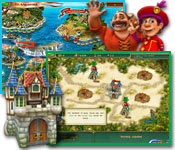 Everything in here is cute, so you don't need to worry about any offensive or disturbing content.
I was surprised to find that my kids actually liked watching a building game such as this. What they really liked were the little workers and tax collectors running around, and the beer-gut pirates. My little people gladly stood watching. They even helped me keep track of things I needed to keep an eye on!
Everything in here is cute, so you don't need to worry about any offensive or disturbing content.
I was surprised to find that my kids actually liked watching a building game such as this. What they really liked were the little workers and tax collectors running around, and the beer-gut pirates. My little people gladly stood watching. They even helped me keep track of things I needed to keep an eye on!

What I liked
What I didn't like
|

Quick Plot
Help to restore safe homes to the realm of Islandshire before the rainy season hits again!Mechanics
Strategy: There aren't many casual games that immediately strike me as "strategy games." It wasn't long before I discovered Royal Envoy to be just that. Many building games offer some degree of strategy, but not like this game does. In your typical building game, such as the Build-a-Lot series or the Be Rich series, your goal is to finish the level within the allotted time. If you don't succeed, you have to play the level over. If you finish the level very quickly, you get an Expert rank. But in these games, the Expert goal is something extra to reach for, if you prefer the challenge. In Royal Envoy, all of the fun is tied into getting the equivalent of the Expert goal. It feels very similar to the Farm Frenzy games. In those games, half of the fun is in trying to figure out the particular sequence of actions that will earn you the Gold medal. That is exactly how Royal Envoy plays out. The developers have given a challenging, but reasonable, timer to each level. When this timer runs out, it just disappears and you can keep playing. But if you finish the level before the timer is out, you get the gold seal.
Pirate Island, with gold seals on all levels, as indicated by the stars.
So what's the point of achieving the gold standard?
There are three benefits:
- The gold seal earns you lots of bonus points, which can earn you a higher rank, which earns you trophies.
- To unlock expert mode, you must complete all levels with a gold seal.
- Achieving gold is very satisfying, mentally. It's a sign of good strategy.
- starting a level,
- looking over the level's goals, and
- devising a strategy for gold-seal success.
- building (or tearing down) the appropriate buildings
- in the best order
- as quickly as possible.
- workers, and
- tax collectors.

How a level looks. At the top you can see money, materials, workers, tax collectors, and happiness.
Now, let me explain all of the buildings and their functions.
You have 3 types of things you can build, and they don't have names (just images) so I'll classify them as houses, decorations, and resource buildings.
The 5 types of houses, from smallest to largest are:
- Cabin (makes the least money)
- Cottage
- Chalet
- Villa
- Mansion (makes the most money)
- Sawmill: You pay money to receive materials.
- Workshop: You pay materials to receive 10x more materials).
- Market: You sell materials to receive money.
- Bank: Accrues money every time you collect taxes. Money can be withdrawn.

Every type of building. Top row: houses.
Bottom row: resource buildings and castle.
Time Management: This is worth mentioning because the game is really a time challenge, if you play it as I've described earlier. You're trying to achieve goals as quickly and efficiently as possible.
Still, for those of you who like the building aspect, but don't like racing against a clock, you can ignore the clock and go at your own pace. You just won't achieve the gold seal on each level, which is okay.
Highlights
Eye candy: How refreshing to play a game that bathes you in highly-polished graphics. The developers overlooked nothing in the graphics department. With the exception of the cut scenes, I was completely pleased with the game's visuals. Each level is vividly colored, with animated scenery and highly detailed objects. I sat and admired the map of Islandshire for the pure fun of it. A series of pretty little islands is situated on a large expanse of sea. The rolling waves are gloriously colored, and each island has special animations that play when you mouse-over or click on it (once you've finished the island). You can see whales jump out of the water while the best music track of the game plays. The map spans beyond the edge of the screen, and when you scroll to the side, a navigator's wheel spins. It's wonderful. This is the sort of thing that really draws me in and begs me to keep playing the game. I thank Playrix for putting this kind of effort into the visual aesthetics.
Music: You know I'm almost always disappointed with the soundtracks for casual games. With a few qualifiers, I'll tell you that I did like the music in this game. Let me explain.
There are 4 kinds of game soundtracks:
- Those that are so bad that you just turn the music off in the settings.
- Those that aren't great, but get the job done, so you leave the music on.
- Those that really help the game and sound good when playing, but don't hold up when listened to outside of the game.
- Those that are so good that you'd gladly listen to the music on your iPod.

Issues
Cut scenes: Each time you finish an island, you view another plot-advancing animated cut scene. Personally, I thought the art style in these scenes was unattractive. All of the character art (with the exception of the girl) seemed strange to me. The animation was kind of awkward, too. Although, I will say that the voice work was good. They obviously hired experienced voice actors. Other than that, I can't think of any other gripes.Suitable for the family?
 Everything in here is cute, so you don't need to worry about any offensive or disturbing content.
I was surprised to find that my kids actually liked watching a building game such as this. What they really liked were the little workers and tax collectors running around, and the beer-gut pirates. My little people gladly stood watching. They even helped me keep track of things I needed to keep an eye on!
Everything in here is cute, so you don't need to worry about any offensive or disturbing content.
I was surprised to find that my kids actually liked watching a building game such as this. What they really liked were the little workers and tax collectors running around, and the beer-gut pirates. My little people gladly stood watching. They even helped me keep track of things I needed to keep an eye on!
The family man's final ruling
This was one of the best games I've played in a while. So much effort went into making it a polished product. The game is worth more than you're likely to pay for it, I think. The levels are all unique, always offering a strategic challenge. The graphics and music support the gameplay with a high-quality delivery. The game kept me interested right up until the end. Virtually every time you mouse over something in the game - buildings, people, trophies, islands - you'll get some interesting animated response. When you get to a level with a cave, try moving your mouse in front of the cave and see what happens! This is as good as casual games get. It's right up there with games like Luxor: Quest for the Afterlife and Ancient Quest of Saqqarah in terms of production quality. If you like building games at all, don't pass this up. The emphasis on strategy and resource/worker management gives it a completely different feel from other games in the genre. I would gladly play a sequel! By the way, I'm going to be writing up a strategy guide for some of the most difficult levels in the game, detailing a method for achieving a gold seal on each level. So keep an eye out for that. You may find it to be helpful if you get stuck on tricky level!
The best way to fill out the trophy room is by achieving gold seals on levels!
You'll like the game if...
You won't like the game if...
|
| My rating: | 
|
Saturday, July 17, 2010
Review - Simplz Zoo!
Early this year, Reflexive Entertainment released a match-3-based zoo-building game called Simplz Zoo.
As you may know, I don't usually enjoy match 3. Intrigued by the glowing feedback others have given for Simplz Zoo, I took a risk and purchased the game, then played it all the way through. It's review time!



What I liked
What I didn't like
|

Quick Plot
Develop your zoo and rise up to become the #1 zoo in the world!!!Mechanics
Match 3: This game uses your generic swap-style match 3. But one really nice feature is that they allow diagonal swaps. (Thank you, Reflexive). Your goal is to swap 2 pieces on the square grid and make straight matched strings of 3 in a row or more. The biggest match you can make is 9 pieces - and you'll actually earn a trophy for accomplishing this in the game. Each match you make earns you resources. A level ends once you've- collected all of the required resources, and
- directed animals along a path to an exit square, and/or
- moved some pieces all the way to the bottom of the puzzle border.

The zoo development interface. Clicking the big PLAY arrow starts the next match 3 level.
Zoo-building: After a level, if you have enough resources, you can build or upgrade buildings and exhibits in your zoo. The zoo-building feature serves the following 4 purposes:
- it can be fun to look at, and it's somewhat educational (learn scientific animal names),
- it allows you to be creative with your own personal zoo design,
- buildings give you upgrades and bonuses for the match 3 levels, and
- adding animals to your zoo is what takes you up the ranks to become the #1 zoo in the world.
- better versions of a resource (Example: Each materials match will bring you 9 materials instead of 3.)
- tools (Example: If you click the monkey tool, it will randomly rearrange pieces on the board.)
- 3-in-a-row bonuses (Example: If you get 3 research matches in a row, a number of locks will break.)
- special effect pieces (Example: If you move the water piece, the bottom two rows of the board are cleared. The water piece appears randomly once you've purchased a hippo.)

You're given objectives before each match 3 level.



 You get to see your zoo ranking after each level, as your resources are tallied.
You get to see your zoo ranking after each level, as your resources are tallied.
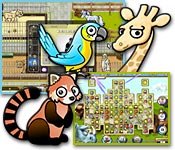 If you're looking for a game that kids will like, this game fits the bill.
If you're looking for a game that kids will like, this game fits the bill.
Highlights
Meaningful and practical match 3: What bothers me about most match 3 games is that all of that work swapping squares, or dragging the mouse across a chain of hexes, serves little purpose. It's just a tedious exercise in finding possible matches. Simplz Zoo gives significance to the match 3 levels. As you make your matches, you have goals in mind. You know that making 3 matches in a row, of the same resource, will offer a beneficial effect on the board. You know that you have powerful board-changing tools charging up to be used at the right time. You have meters at the top of the screen showing you how many more of each resource you need. Sometimes, you need to clear a path for an animal. Sometimes you need to get pieces to the bottom of the match-3 frame. All of this makes the match-3 experience practical. You are maintaining and expanding your zoo by playing the levels in a particular way. As the game progresses, more and more features are added to the match-3 levels. This provides variety and makes the levels more interesting.
Zoo development: I liked that this game had something secondary to work at, and not just an unbroken string of match-3 levels. The developers were clever in giving you goals to work for. The ultimate goal is to become the #1 zoo in the world. The problem is, you start off way at the bottom, working to make it into the top 1000. If you want to become the #1 zoo, you've got your work cut out for you. And if you want to develop your zoo, you need exhibits and other important zoo facilities. To build those, you need to gain resources. To gain resources, you need to play match 3.
So that's how they make the game interesting. The zoo development is the driving force that gives significance to everything you do.
Optional time limit: If you prefer the challenge, you can decide before each level if you'd like to have a time limit. If you don't finish the level's objectives before the timer runs out, you lose and have to try again. If you finish the level with time left, you get bonus points of some sort. I kept the time limit on for a few levels, but then it quickly became too difficult to beat the levels. I preferred taking my time and working to gain lots of resources, rather than racing the clock. So I turned off the time limit for most of the game. I'm so glad they made this optional.

Upgrades and bonuses: Bonuses are to games what sauce is to food. The right sauce can bring any meal to life. Similarly, a game may have swell mechanics, but if you can get helpful boosts in the form of upgrades, it enhances the gaming experience to make it all the sweeter. This game is loaded with such add-ons. As I've explained already, these bonuses exist in both the zoo-building and match-3 portions of the game. They serve as both goals and helpers. They make the game dynamic, and that keeps us playing.
Issues
Production values: This is a game that manages to get away with low-detail graphics and merely adequate music because the gameplay is good. I don't mean the graphics are grainy or poorly crafted. I just don't like the art style. It's too "simplz" for me. The cartoony style lacks depth. It gets the job done in a cute sort of way, but doesn't dazzle on any level. The best graphics in the game are those in the match 3 levels. The pieces look cool, and when you make matches, little purple lights shoot all over the place. The music is just.........mediocre, like most games on the market. The composer obviously understands some things about music, but like the graphics, the soundtrack is too simple. I think this is the first game where I actually turned the music completely off for most of the game. But, hey, it's a matter of taste. You may like it, but don't say I didn't warn you.
That's a musk ox. And he's chewing bubble gum.
Indoor exhibits: Part of the fun, when buying a new animal for your zoo, is seeing the animal walking around. You want to watch the beast you purchased - it seems a fair reward for the work you did to earn it.
But for some reason, the developers didn't want to go the extra mile and actually animate every animal in the game. So they created a huge list of exhibits that house 4 animals each. These exhibits show up in your zoo, but the animals don't. You can see images of the animals on the screen where you buy them, but you don't get to watch them moving around their environment. This was disappointing for me, but even more so for my kids, who wanted to observe each animal in action. They were asking me to "go in" to the Carnivore Cubbyhole exhibit, and I had to inform them that I couldn't.
Was it really that complicated for the developers to make all animals observable?
No ending?: If you've read my reviews before, you know that I like good endings. I feel like developers owe it to the player - a final payoff for completing the game, a 5- to 20-minute closer for the story.
I don't think this game has an ending, but I'm not certain.
I achieved the #1 zoo rank after 85 levels of match 3, and then played a few more for no particular reason. That completed my bulletin board (which serves as a sort of trophy room). I had nothing else to work for, but I could continue playing levels and decorating my zoo with flowers and benches and such, should I care to. So, if I played 100 levels, would I get an ending then? I may never know. If you discover an ending, please comment on this post and let me know.
 You get to see your zoo ranking after each level, as your resources are tallied.
You get to see your zoo ranking after each level, as your resources are tallied.
Suitable for the family?
 If you're looking for a game that kids will like, this game fits the bill.
If you're looking for a game that kids will like, this game fits the bill.
- Animals galore - check!
- Cute - check!
- Educational - check!
The family man's final ruling
I'm not a fan of match 3. And yet I liked this game. I had fun each time I sat down to play, and the kids gladly stood by. They were pleased with each new animal I freed on the match 3 board, and each new animal I added to my zoo. The audio and visuals were nothing special, but the gameplay was clean, and professionally delivered. Multiple goals kept the game interesting. This is probably the most fun I've had with swap-style match 3.You'll like the game if...
You won't like the game if...
|
| My rating: | 
|
Wednesday, July 7, 2010
6 new games I tried . . . but didn't buy
One of my goals is to find the best games on the casual market, and then to share them with you in reviews. To find games worth playing and reviewing, I have to try a lot of games. Much of the time, you don't hear from me about the games I don't like, or the games that were only kind of fun. So, occasionally, I like to catch you up on some games that weren't worth buying for one reason or another.
In order of release date, here are 6 recent releases that I tried but didn't buy.
 Ranch Rush 2: When I saw how much love this game was receiving from the casual game community, I decided I had better try it.
You play a farmer girl who has to run around planting seeds, and loading up boxes with harvested plants. You will also need to deliver your harvested goods to the barn and water your plants.
There are a few other time management games that have very similar mechanics.
I'm glad that I tried this game because it reminded me that there is great variety within the time management genre, and not all types are equally fun for each person. Many of my favorite games are time management games. But this game confirmed that I don't enjoy this particular brand of time management. I'm not sure why. Thinking about it, I realize that my pattern is to avoid time management games in which you send some character dashing about. I almost always prefer a 1st person perspective (I did enjoy Mystic Inn, for example).
Ranch Rush 2 didn't offer the type of challenge that I like. The planting, harvesting, and delivering, as presented here, felt boring. You might love the game, but I bailed after a short time.
Ranch Rush 2: When I saw how much love this game was receiving from the casual game community, I decided I had better try it.
You play a farmer girl who has to run around planting seeds, and loading up boxes with harvested plants. You will also need to deliver your harvested goods to the barn and water your plants.
There are a few other time management games that have very similar mechanics.
I'm glad that I tried this game because it reminded me that there is great variety within the time management genre, and not all types are equally fun for each person. Many of my favorite games are time management games. But this game confirmed that I don't enjoy this particular brand of time management. I'm not sure why. Thinking about it, I realize that my pattern is to avoid time management games in which you send some character dashing about. I almost always prefer a 1st person perspective (I did enjoy Mystic Inn, for example).
Ranch Rush 2 didn't offer the type of challenge that I like. The planting, harvesting, and delivering, as presented here, felt boring. You might love the game, but I bailed after a short time.
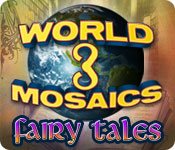 World Mosaics 3 - Fairy Tales: This is a puzzle game. And I wish I could own it . . . without paying for it.
The "mosaics" you build are "paint by numbers" (or nonogram) puzzles. You have to use your logic skills to figure out which squares in the grid are filled, and which ones are empty. When I first played this sort of puzzle years ago, a completed puzzle ended up with a random array of filled squares at the end. But this game manages to make a picture out of each puzzle by adding a bit of color to the completed image.
This plays just like the previous World Mosaics games, but this time, the theme is fairy tales.
I love this sort of logic puzzle, and I had a great time playing through the first chunk of this game. But I just can't bring myself to pay for it. The presentation is attractive, and the soundtrack was surprisingly good this time around (if short in length). But at the end of the day, it's just a collection of paint-by-numbers puzzles, and the miser in me doesn't want to throw cash at a puzzle collection. But if it was free, I'd grab it right up!
World Mosaics 3 - Fairy Tales: This is a puzzle game. And I wish I could own it . . . without paying for it.
The "mosaics" you build are "paint by numbers" (or nonogram) puzzles. You have to use your logic skills to figure out which squares in the grid are filled, and which ones are empty. When I first played this sort of puzzle years ago, a completed puzzle ended up with a random array of filled squares at the end. But this game manages to make a picture out of each puzzle by adding a bit of color to the completed image.
This plays just like the previous World Mosaics games, but this time, the theme is fairy tales.
I love this sort of logic puzzle, and I had a great time playing through the first chunk of this game. But I just can't bring myself to pay for it. The presentation is attractive, and the soundtrack was surprisingly good this time around (if short in length). But at the end of the day, it's just a collection of paint-by-numbers puzzles, and the miser in me doesn't want to throw cash at a puzzle collection. But if it was free, I'd grab it right up!
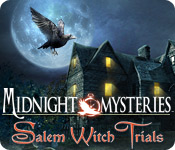 Midnight Mysteries 2 - The Salem Witch Trials: Here was me playing this game:
"Hmm. This looks interesting enough to try."
[downloads game and begins playing]
"Okay, let's see. I need to find all of these items..." *yawn*
[plays through the first scene]
"Hey, a ghost showed up to talk to me." *yawn*
[bails and uninstalls game]
My opinion is that if you're going to design a HOG these days, it had better be pretty special. This new entry in the Midnight Mysteries series offered nothing to keep me interested. If you want more of the same mundane gameplay found in almost every other recent HOG, then you should try this game. The graphics are nice, and the interface is pretty good, but zzzzzzzzzzzzzzzzzz.....
Midnight Mysteries 2 - The Salem Witch Trials: Here was me playing this game:
"Hmm. This looks interesting enough to try."
[downloads game and begins playing]
"Okay, let's see. I need to find all of these items..." *yawn*
[plays through the first scene]
"Hey, a ghost showed up to talk to me." *yawn*
[bails and uninstalls game]
My opinion is that if you're going to design a HOG these days, it had better be pretty special. This new entry in the Midnight Mysteries series offered nothing to keep me interested. If you want more of the same mundane gameplay found in almost every other recent HOG, then you should try this game. The graphics are nice, and the interface is pretty good, but zzzzzzzzzzzzzzzzzz.....
 Little Space Duo: We get very few space-themed games in the casual world, so I pay attention when such a game is released. When I saw the intriguing screenshots for this one, I downloaded it right away and dove in.
Not only were the controls and interface a bit tricky to get used to, but I couldn't even figure out how to pass the first level. I know I'm not a genius, but assuming the game gets even more complicated in later levels, one would hope that the first level would be relatively easy.
The story was fair, as were the graphics. So I'll just keep looking forward to the day when some clever developer releases that superb space-themed game I'm waiting for.
Little Space Duo: We get very few space-themed games in the casual world, so I pay attention when such a game is released. When I saw the intriguing screenshots for this one, I downloaded it right away and dove in.
Not only were the controls and interface a bit tricky to get used to, but I couldn't even figure out how to pass the first level. I know I'm not a genius, but assuming the game gets even more complicated in later levels, one would hope that the first level would be relatively easy.
The story was fair, as were the graphics. So I'll just keep looking forward to the day when some clever developer releases that superb space-themed game I'm waiting for.
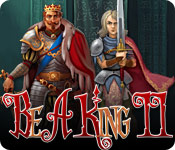 Be a King 2: Now this is a game that I would gladly nab, if the price was right. This is a building/strategy game. I typically really enjoy this sort of game (my favorite being Coconut Queen). It has a little bit of that Warcraft III flavor (with shooting towers and invading hordes). The graphics are very nice, the music is fair, and the production is nice overall.
So why didn't I buy it? It doesn't seem to offer anything.....special. It was released on the heels of Royal Envoy, which is similar, but has something special to offer. The game is good, but not necessarily worth buying, until you've finished the other games you're more interested in. Still, this is an incredibly good production, considering the tiny development team. Would I buy it as a daily deal for $2.99? Maybe. Probably.
Be a King 2: Now this is a game that I would gladly nab, if the price was right. This is a building/strategy game. I typically really enjoy this sort of game (my favorite being Coconut Queen). It has a little bit of that Warcraft III flavor (with shooting towers and invading hordes). The graphics are very nice, the music is fair, and the production is nice overall.
So why didn't I buy it? It doesn't seem to offer anything.....special. It was released on the heels of Royal Envoy, which is similar, but has something special to offer. The game is good, but not necessarily worth buying, until you've finished the other games you're more interested in. Still, this is an incredibly good production, considering the tiny development team. Would I buy it as a daily deal for $2.99? Maybe. Probably.
 Flux Family Secrets - The Rabbit Hole: This is a weird one for me. On one hand, the interface, graphics, and gameplay are all very nice. On the other hand, it violates one of my personal values, namely, the objectifying of women. This issue is rampant in the world. Everywhere, the image of the female form is used as a tool and a marketing gimmick. Within the first several minutes of this game, the female form was used twice - once in the form of a character drawing, and once in the form of a statue.
Otherwise, the production is very good, and would like to see more games in this style. From what I saw, it included hidden objects and puzzles. I didn't see anything particularly innovative, but the presentation was on the high end of the quality scale.
So there you have it - 6 new games I tried but didn't buy. You may wonder if I've liked any new games. Yes, I have, and you'll be hearing about them before too long.
Flux Family Secrets - The Rabbit Hole: This is a weird one for me. On one hand, the interface, graphics, and gameplay are all very nice. On the other hand, it violates one of my personal values, namely, the objectifying of women. This issue is rampant in the world. Everywhere, the image of the female form is used as a tool and a marketing gimmick. Within the first several minutes of this game, the female form was used twice - once in the form of a character drawing, and once in the form of a statue.
Otherwise, the production is very good, and would like to see more games in this style. From what I saw, it included hidden objects and puzzles. I didn't see anything particularly innovative, but the presentation was on the high end of the quality scale.
So there you have it - 6 new games I tried but didn't buy. You may wonder if I've liked any new games. Yes, I have, and you'll be hearing about them before too long.
 Ranch Rush 2: When I saw how much love this game was receiving from the casual game community, I decided I had better try it.
You play a farmer girl who has to run around planting seeds, and loading up boxes with harvested plants. You will also need to deliver your harvested goods to the barn and water your plants.
There are a few other time management games that have very similar mechanics.
I'm glad that I tried this game because it reminded me that there is great variety within the time management genre, and not all types are equally fun for each person. Many of my favorite games are time management games. But this game confirmed that I don't enjoy this particular brand of time management. I'm not sure why. Thinking about it, I realize that my pattern is to avoid time management games in which you send some character dashing about. I almost always prefer a 1st person perspective (I did enjoy Mystic Inn, for example).
Ranch Rush 2 didn't offer the type of challenge that I like. The planting, harvesting, and delivering, as presented here, felt boring. You might love the game, but I bailed after a short time.
Ranch Rush 2: When I saw how much love this game was receiving from the casual game community, I decided I had better try it.
You play a farmer girl who has to run around planting seeds, and loading up boxes with harvested plants. You will also need to deliver your harvested goods to the barn and water your plants.
There are a few other time management games that have very similar mechanics.
I'm glad that I tried this game because it reminded me that there is great variety within the time management genre, and not all types are equally fun for each person. Many of my favorite games are time management games. But this game confirmed that I don't enjoy this particular brand of time management. I'm not sure why. Thinking about it, I realize that my pattern is to avoid time management games in which you send some character dashing about. I almost always prefer a 1st person perspective (I did enjoy Mystic Inn, for example).
Ranch Rush 2 didn't offer the type of challenge that I like. The planting, harvesting, and delivering, as presented here, felt boring. You might love the game, but I bailed after a short time.
 World Mosaics 3 - Fairy Tales: This is a puzzle game. And I wish I could own it . . . without paying for it.
The "mosaics" you build are "paint by numbers" (or nonogram) puzzles. You have to use your logic skills to figure out which squares in the grid are filled, and which ones are empty. When I first played this sort of puzzle years ago, a completed puzzle ended up with a random array of filled squares at the end. But this game manages to make a picture out of each puzzle by adding a bit of color to the completed image.
This plays just like the previous World Mosaics games, but this time, the theme is fairy tales.
I love this sort of logic puzzle, and I had a great time playing through the first chunk of this game. But I just can't bring myself to pay for it. The presentation is attractive, and the soundtrack was surprisingly good this time around (if short in length). But at the end of the day, it's just a collection of paint-by-numbers puzzles, and the miser in me doesn't want to throw cash at a puzzle collection. But if it was free, I'd grab it right up!
World Mosaics 3 - Fairy Tales: This is a puzzle game. And I wish I could own it . . . without paying for it.
The "mosaics" you build are "paint by numbers" (or nonogram) puzzles. You have to use your logic skills to figure out which squares in the grid are filled, and which ones are empty. When I first played this sort of puzzle years ago, a completed puzzle ended up with a random array of filled squares at the end. But this game manages to make a picture out of each puzzle by adding a bit of color to the completed image.
This plays just like the previous World Mosaics games, but this time, the theme is fairy tales.
I love this sort of logic puzzle, and I had a great time playing through the first chunk of this game. But I just can't bring myself to pay for it. The presentation is attractive, and the soundtrack was surprisingly good this time around (if short in length). But at the end of the day, it's just a collection of paint-by-numbers puzzles, and the miser in me doesn't want to throw cash at a puzzle collection. But if it was free, I'd grab it right up!
 Midnight Mysteries 2 - The Salem Witch Trials: Here was me playing this game:
"Hmm. This looks interesting enough to try."
[downloads game and begins playing]
"Okay, let's see. I need to find all of these items..." *yawn*
[plays through the first scene]
"Hey, a ghost showed up to talk to me." *yawn*
[bails and uninstalls game]
My opinion is that if you're going to design a HOG these days, it had better be pretty special. This new entry in the Midnight Mysteries series offered nothing to keep me interested. If you want more of the same mundane gameplay found in almost every other recent HOG, then you should try this game. The graphics are nice, and the interface is pretty good, but zzzzzzzzzzzzzzzzzz.....
Midnight Mysteries 2 - The Salem Witch Trials: Here was me playing this game:
"Hmm. This looks interesting enough to try."
[downloads game and begins playing]
"Okay, let's see. I need to find all of these items..." *yawn*
[plays through the first scene]
"Hey, a ghost showed up to talk to me." *yawn*
[bails and uninstalls game]
My opinion is that if you're going to design a HOG these days, it had better be pretty special. This new entry in the Midnight Mysteries series offered nothing to keep me interested. If you want more of the same mundane gameplay found in almost every other recent HOG, then you should try this game. The graphics are nice, and the interface is pretty good, but zzzzzzzzzzzzzzzzzz.....
 Little Space Duo: We get very few space-themed games in the casual world, so I pay attention when such a game is released. When I saw the intriguing screenshots for this one, I downloaded it right away and dove in.
Not only were the controls and interface a bit tricky to get used to, but I couldn't even figure out how to pass the first level. I know I'm not a genius, but assuming the game gets even more complicated in later levels, one would hope that the first level would be relatively easy.
The story was fair, as were the graphics. So I'll just keep looking forward to the day when some clever developer releases that superb space-themed game I'm waiting for.
Little Space Duo: We get very few space-themed games in the casual world, so I pay attention when such a game is released. When I saw the intriguing screenshots for this one, I downloaded it right away and dove in.
Not only were the controls and interface a bit tricky to get used to, but I couldn't even figure out how to pass the first level. I know I'm not a genius, but assuming the game gets even more complicated in later levels, one would hope that the first level would be relatively easy.
The story was fair, as were the graphics. So I'll just keep looking forward to the day when some clever developer releases that superb space-themed game I'm waiting for.
 Be a King 2: Now this is a game that I would gladly nab, if the price was right. This is a building/strategy game. I typically really enjoy this sort of game (my favorite being Coconut Queen). It has a little bit of that Warcraft III flavor (with shooting towers and invading hordes). The graphics are very nice, the music is fair, and the production is nice overall.
So why didn't I buy it? It doesn't seem to offer anything.....special. It was released on the heels of Royal Envoy, which is similar, but has something special to offer. The game is good, but not necessarily worth buying, until you've finished the other games you're more interested in. Still, this is an incredibly good production, considering the tiny development team. Would I buy it as a daily deal for $2.99? Maybe. Probably.
Be a King 2: Now this is a game that I would gladly nab, if the price was right. This is a building/strategy game. I typically really enjoy this sort of game (my favorite being Coconut Queen). It has a little bit of that Warcraft III flavor (with shooting towers and invading hordes). The graphics are very nice, the music is fair, and the production is nice overall.
So why didn't I buy it? It doesn't seem to offer anything.....special. It was released on the heels of Royal Envoy, which is similar, but has something special to offer. The game is good, but not necessarily worth buying, until you've finished the other games you're more interested in. Still, this is an incredibly good production, considering the tiny development team. Would I buy it as a daily deal for $2.99? Maybe. Probably.
 Flux Family Secrets - The Rabbit Hole: This is a weird one for me. On one hand, the interface, graphics, and gameplay are all very nice. On the other hand, it violates one of my personal values, namely, the objectifying of women. This issue is rampant in the world. Everywhere, the image of the female form is used as a tool and a marketing gimmick. Within the first several minutes of this game, the female form was used twice - once in the form of a character drawing, and once in the form of a statue.
Otherwise, the production is very good, and would like to see more games in this style. From what I saw, it included hidden objects and puzzles. I didn't see anything particularly innovative, but the presentation was on the high end of the quality scale.
So there you have it - 6 new games I tried but didn't buy. You may wonder if I've liked any new games. Yes, I have, and you'll be hearing about them before too long.
Flux Family Secrets - The Rabbit Hole: This is a weird one for me. On one hand, the interface, graphics, and gameplay are all very nice. On the other hand, it violates one of my personal values, namely, the objectifying of women. This issue is rampant in the world. Everywhere, the image of the female form is used as a tool and a marketing gimmick. Within the first several minutes of this game, the female form was used twice - once in the form of a character drawing, and once in the form of a statue.
Otherwise, the production is very good, and would like to see more games in this style. From what I saw, it included hidden objects and puzzles. I didn't see anything particularly innovative, but the presentation was on the high end of the quality scale.
So there you have it - 6 new games I tried but didn't buy. You may wonder if I've liked any new games. Yes, I have, and you'll be hearing about them before too long.
Subscribe to:
Posts (Atom)